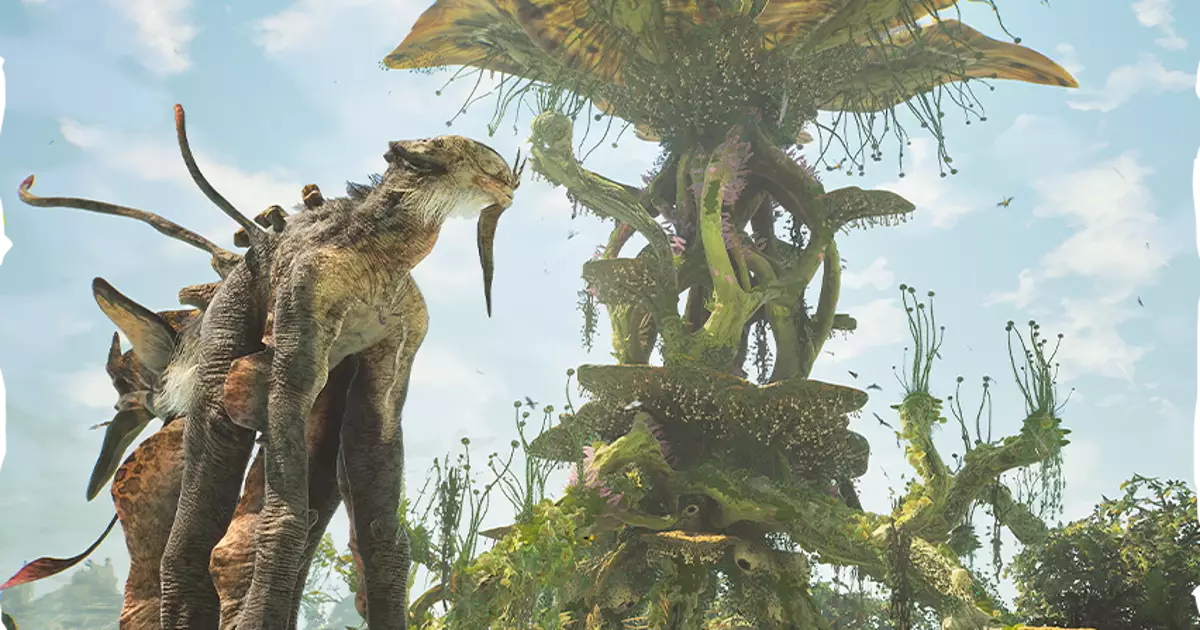In a burgeoning gaming landscape where open-world experiences are a dime a dozen, Dreamlit’s Towers of Aghasba aims to carve its niche by immersing players in an ecologically focused journey. The newly released footage teases a vibrant world filled with exotic flora and fauna, and fascinating gameplay mechanics that delve into exploration, village building, and ecosystem simulation. Scheduled for release on November 19, 2024, the title has already caught the attention of gaming enthusiasts, raising questions about its depth, originality, and overall execution.
At its core, Towers of Aghasba positions players as junior architects from the Shimu tribe, tasked with rejuvenating a landscape devastated by mysterious forces known as the Withered. The premise itself offers an appealing moral compass, rooted in ecological restoration, but one must remain cautious about the potential for this concept to transform into mere superficiality. While the fantasy elements, such as nurturing creatures and cultivating lush environments, evoke intrigue, they may mask a deeper narrative void.
One of the standout features of Towers of Aghasba is its emphasis on interactive ecosystems. The game ensures that players are not mere consumers of resources but participants in a vibrant ecological narrative. Players can engage with various fantasy animals, opting either for nurturing or exploiting them. This duality offers an enticing choice—do you protect the whimsical pastel creatures, or do you harvest them for crafting components? Yet, this mechanic raises critical questions regarding player agency and ethical considerations. Will these choices truly impact the game world, or will they be relegated to cosmetic alterations devoid of significant consequence?
The lush environments and diverse flora further enhance this aspect, drawing comparisons to titles like Subnautica that have successfully intertwined ecosystem simulation with exploration. However, this raises an important facet of gaming that must not be overlooked: the risk of oversimplification. Will the interactions with wildlife and the environment instill real ecological understanding, or are they merely whimsical elements that serve to divert attention from a potentially lackluster narrative?
Visually, Towers of Aghasba appears rich, vibrant, and positively bursting with life. The organic shapes of buildings and natural landscapes present an artistic vision that is oddly mesmerizing. However, the potential disconnect arises when traditional gaming mechanics such as holographic templates for construction clash with the otherwise earthy aesthetic. Players might find themselves momentarily jolted from immersion when the interface feels more like a digital overlay rather than a seamless extension of the vibrant world.
Moreover, the game’s thematic grounding in Indigenous cultures warrants a critical examination. While drawing inspiration from real-world cultures can enrich the narrative, there’s a responsibility to handle such themes with equity and depth. A superficial adaptation risks watering down profound cultural narratives into a mere backdrop for an adventure game. It’s crucial that developers navigate this territory with thoughtfulness and care, lest they become perpetrators of cultural appropriation rather than advocates for representation.
Gameplay Mechanics: Potential and Pitfalls
Gameplay mechanics, including real-time combat and crafting systems, seem standard and reminiscent of many survival games. While co-op support opens avenues for communal play, relying on familiar mechanics without innovation may lead to predictability. The promise of challenges and rewards is enticing, but how will Towers of Aghasba set itself apart from its predecessors? Without a distinct signature gameplay loop, the game risks drowning in the vast ocean of survival games that clutter today’s market.
Towers of Aghasba brings together a promising concept with an inviting aesthetic and intriguing ecosystem interactions. Yet, lingering questions about narrative depth, ethical considerations, and gameplay mechanics remain. As players eagerly anticipate the release, it is vital to approach this eco-tribal adventure with cautious optimism—wondering if it will transcend its survival game roots or merely slip into the background noise of an oversaturated genre. We can only hope that the journey through this vividly imagined world will ultimately offer layers of meaning and engagement rather than a hollow pastiche.

